Treeferns in Mountain Ash Forest My favourite terrestrial habitat in…
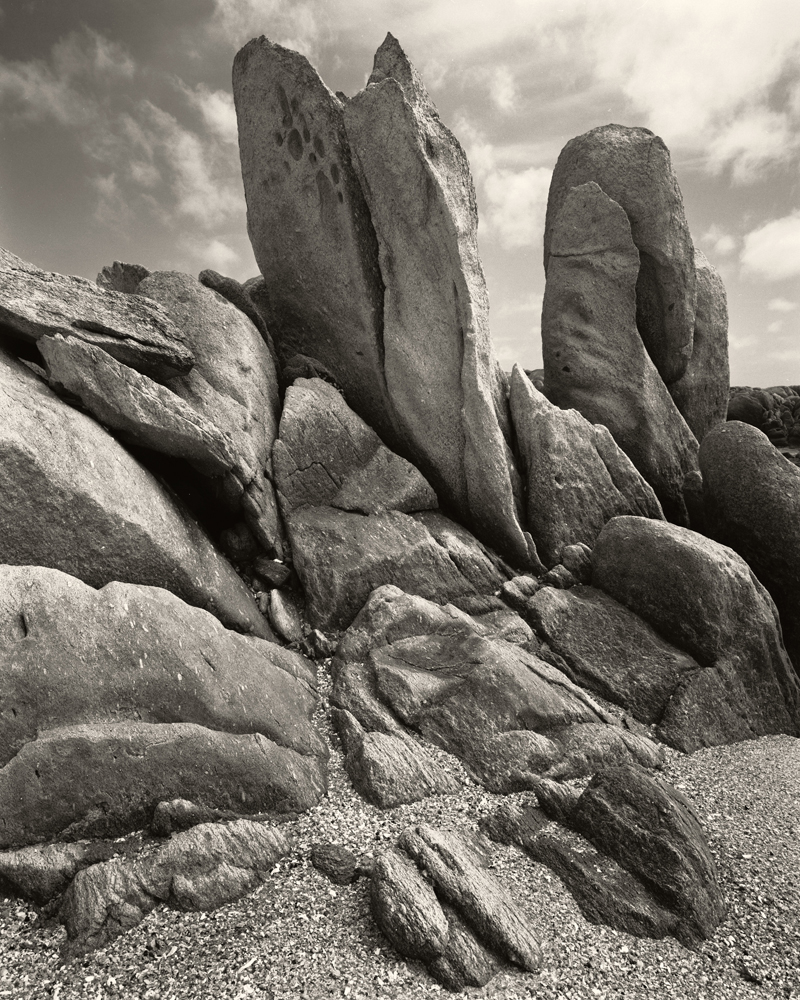
Folio: David Tatnall
Cape Conran Coastal Park. Victoria
Cape Conran is magnificent; the granite boulders at West Cape and Salmon Rocks are otherworldly and at Cowrie Bay the granite gives way to Ordovician sandstone and slate, making a completely different landscape. The Yerrung River to the east can vary from a huge inlet to a raging torrent rushing into the sea. Further east the pristine Dock Inlet is a beautiful place to camp, its catchment completely within the coastal park.
I first became aware of the magnificent Cape Conran area in the 1970’s seeing Ian Lobb’s photographs at The Photographers’ Gallery & Workshop.
My involvement in conservation campaigns in the 1970’s and 1980’s to create the Croajingolong National Park (declared in 1979) and to preserve the pristine old growth forests in the north that led to the creation of Errinundra and Snowy River National Parks (declared in 1988) saw me often stopping at Cape Conran as a break in the long journey, so I got to know Cape Conran very well. I looked forward to a journey break camping in the beautiful Banksia Buff area and backpacking to the pristine Dock Inlet.
In 2000 the State Government of Victoria set up the School for Student Leadership campus called The Alpine School at Dinner plain near Mount Hotham. The second campus was near Point Ricardo at Cape Conran. I was Artist In Residence at both campuses from 2001 until I retired in 2019. During that time I visited Cape Conran four times a year to teach the year nine students film photography using 35 mm cameras.
The majority of the photographs in this Folio were made during my time at Cape Conran as Artist In Residence. I would often be up before sunrise to make photographs before my teaching time started and regularly continued on after teaching time until it was dark.
My favourite time of the year there was mid winter. Often the weather would be calm, and with luck thin cloud would cover the sky. I have fond memories of near perfect conditions for photography then. It wasn’t always like that though. Gale force winds sending horizontal spray with frighting speed and force weren’t uncommon. As was torrential rain.
No matter what the conditions it was always a remarkable experience being at Cape Conran.
Main Photograph above: West Cape. 50 x 40 cm silver gelatin print.
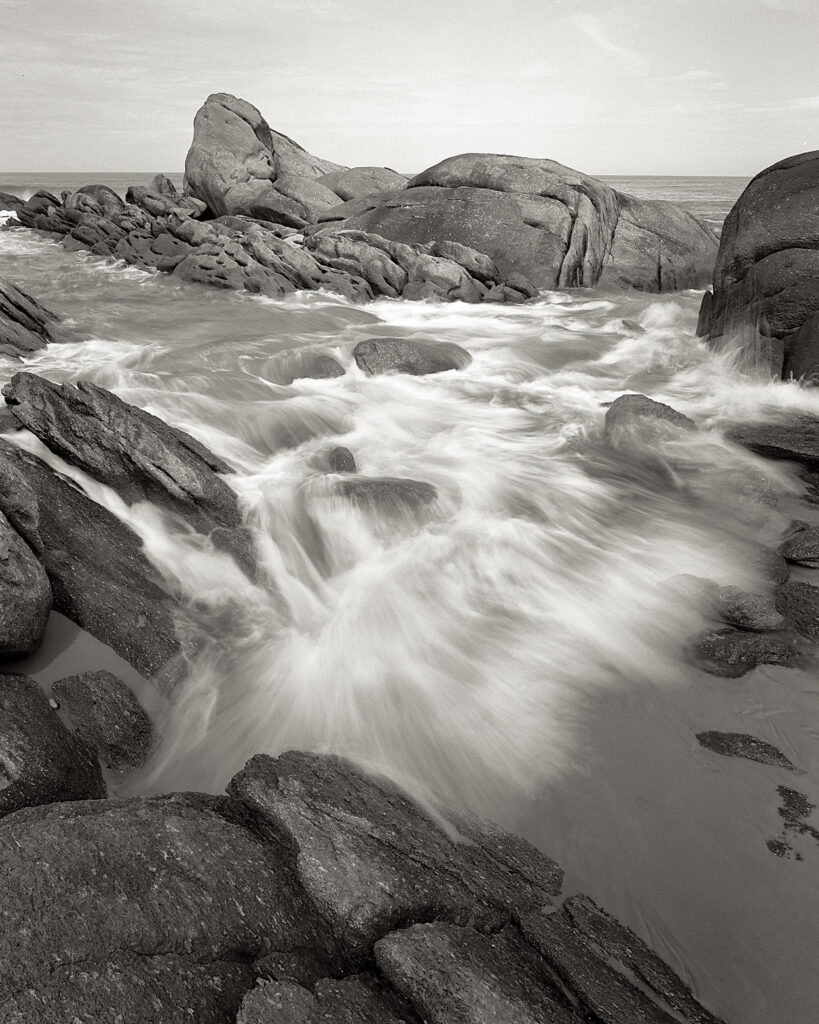
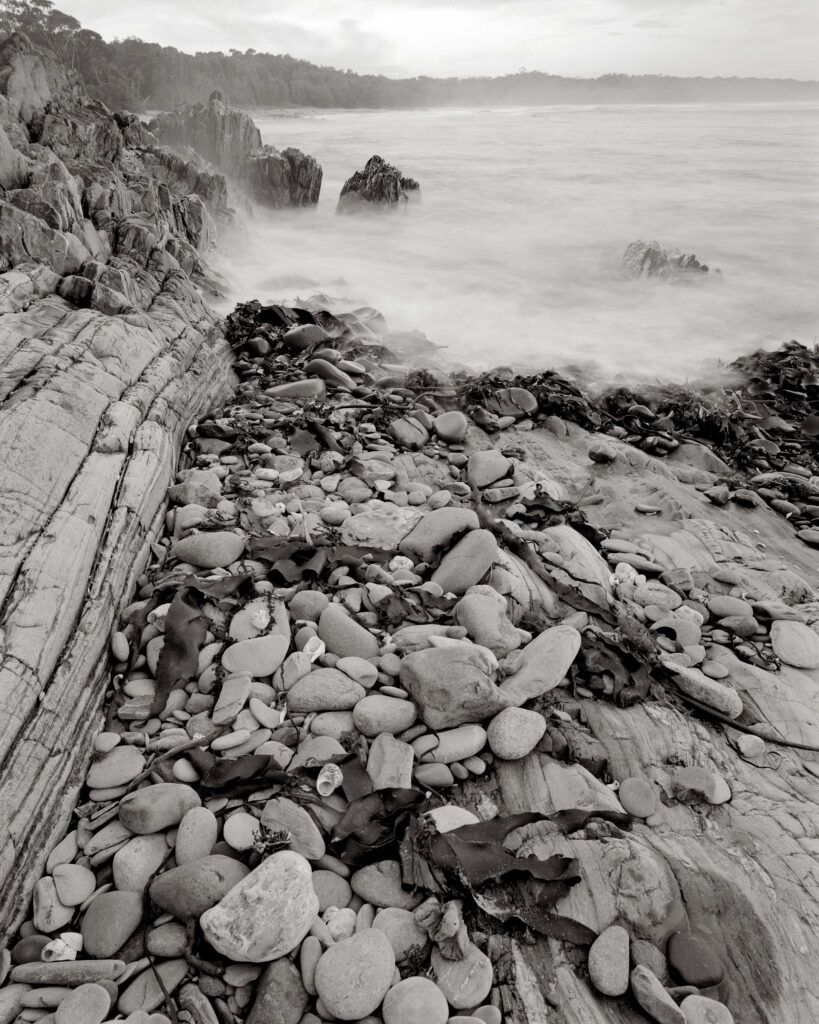
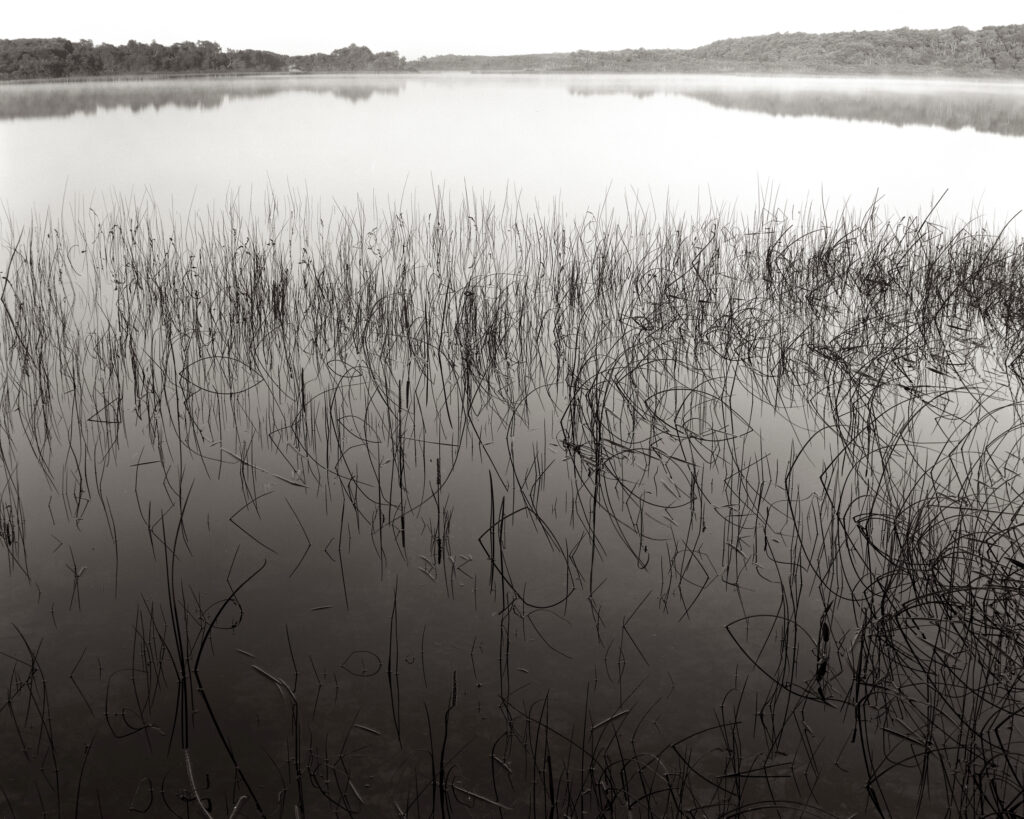
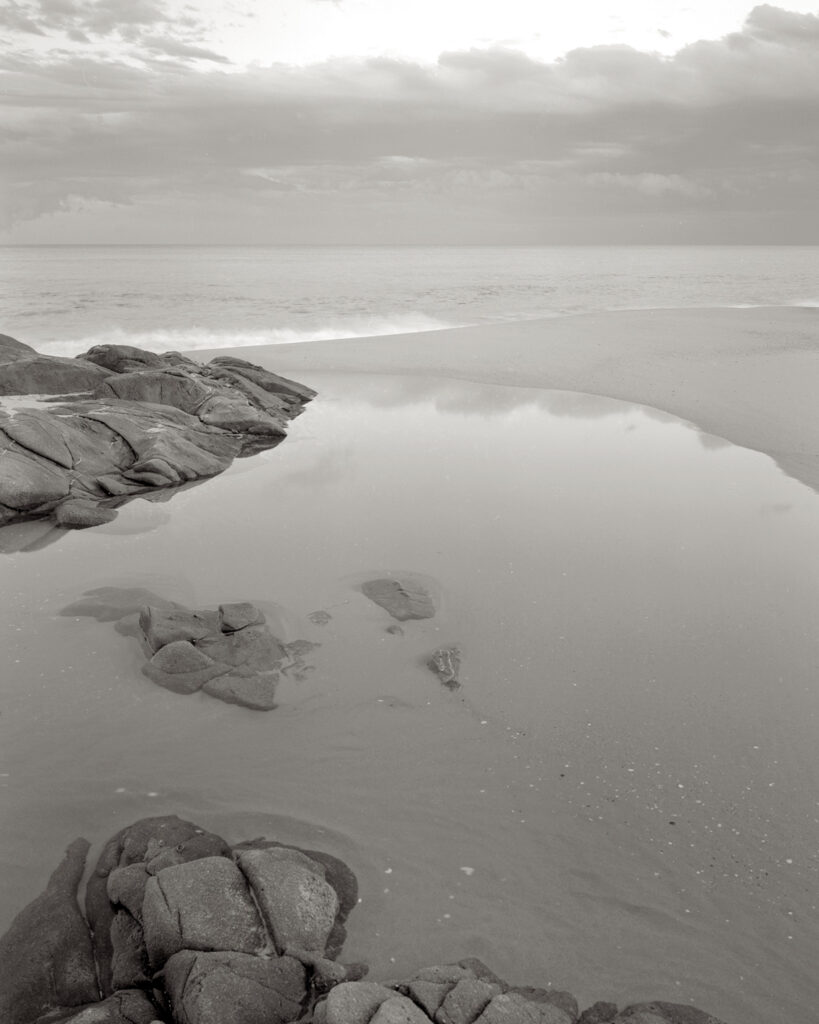
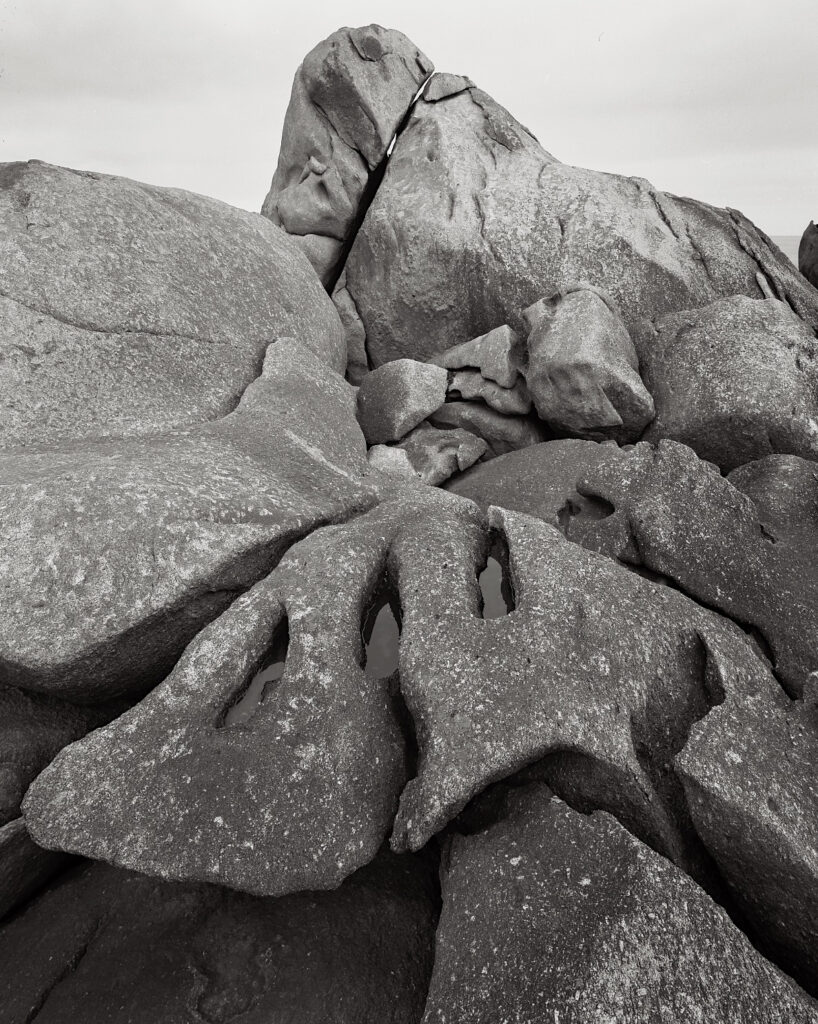
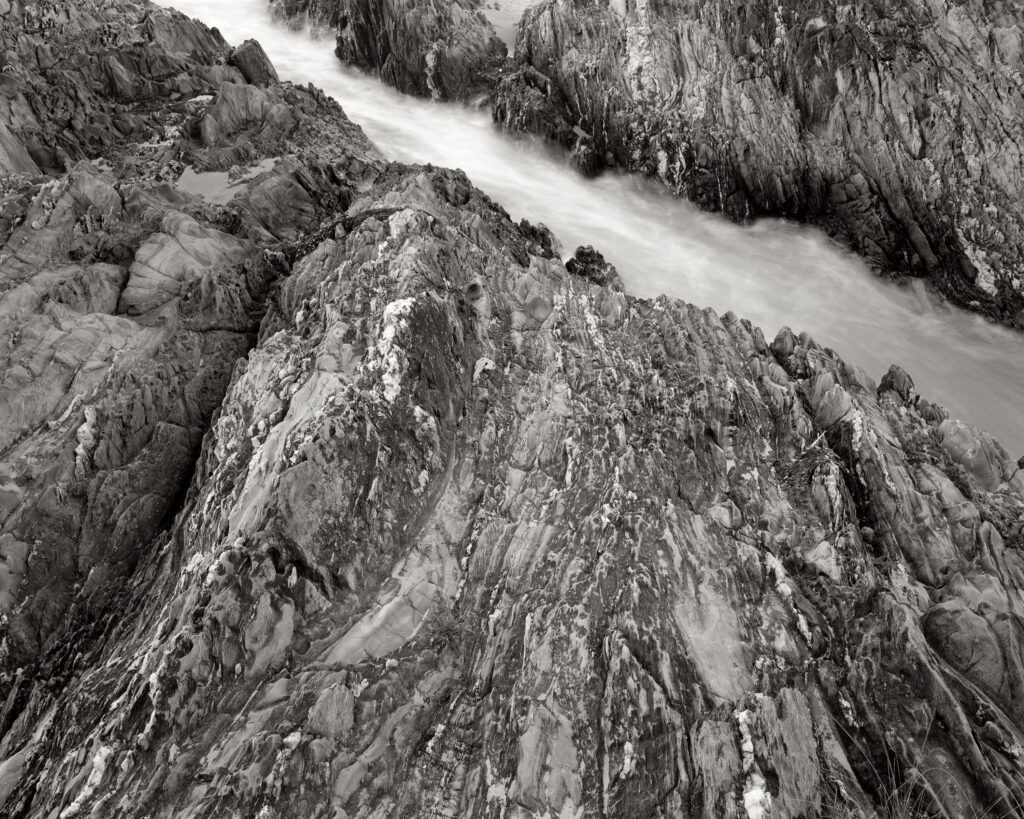
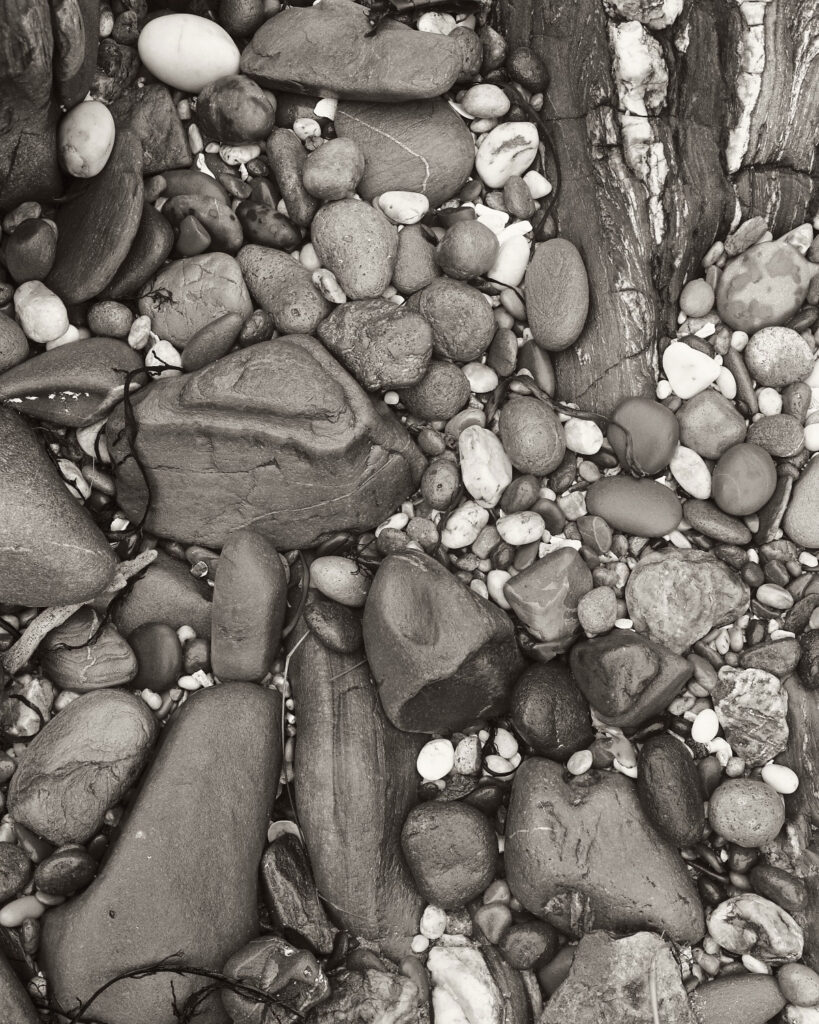
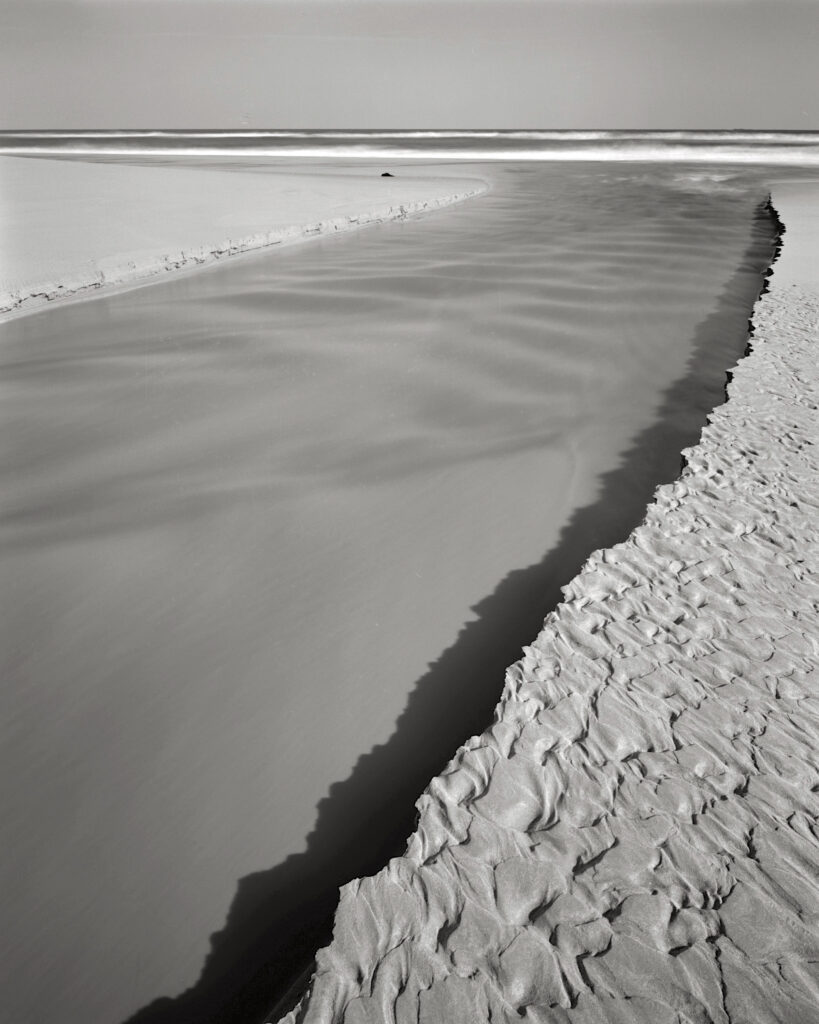
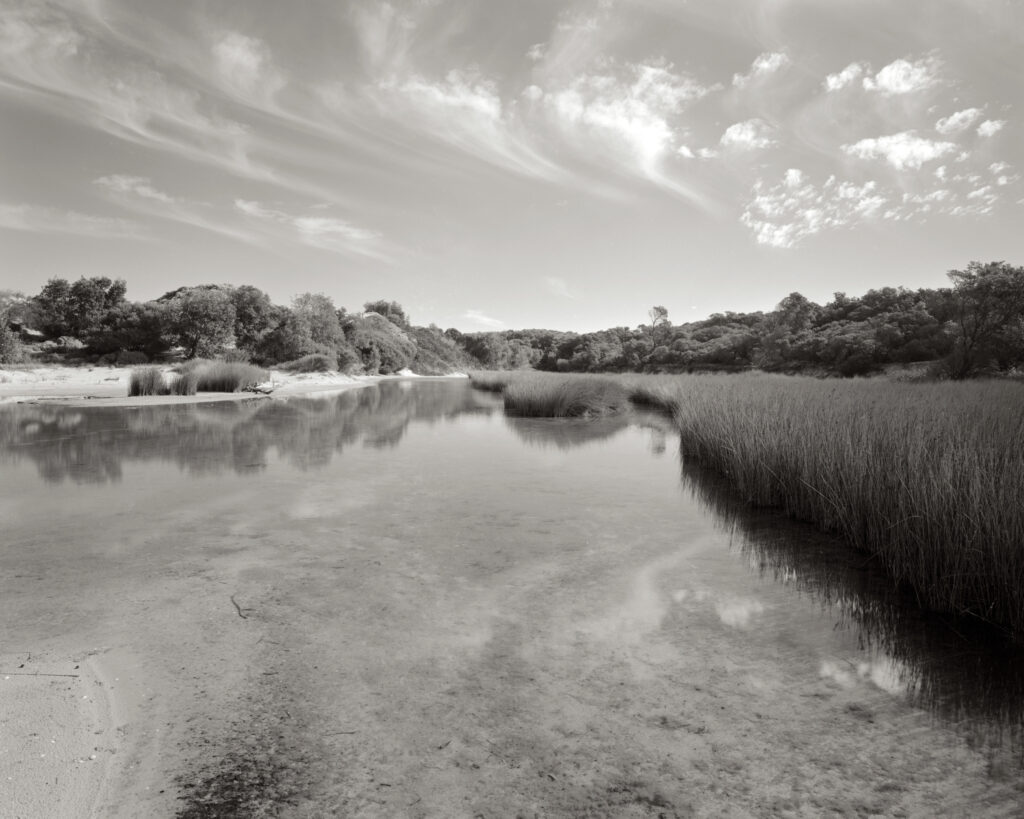
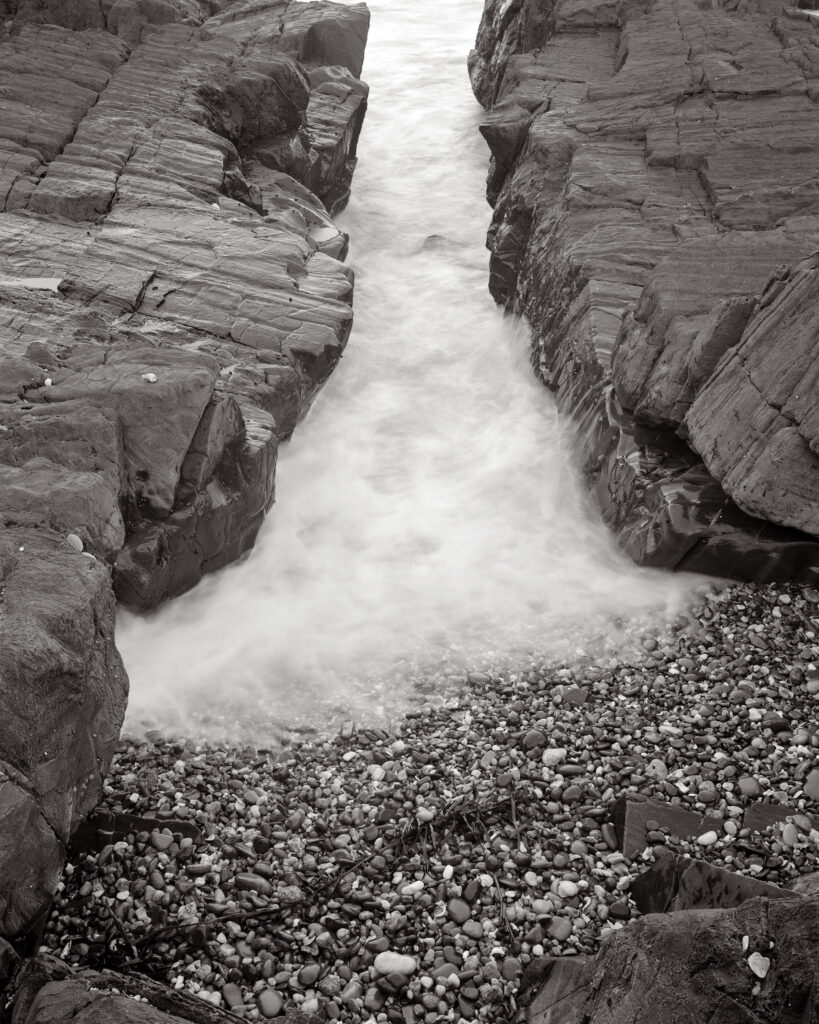
Footnote
Despite regular ‘fuel reduction burns’ over many years – of which a good number have got out of control burning much bigger areas than planned. A series of calamitous failed backburns in January 2020 resulted in almost all of Cape Conran Coastal Park being burnt.
Almost all of the magnificent old growth Banksias and tea tree groves are now gone. Regeneration will take decades.
Technical information
The Cape Conran Coastal Park of 11,500 hectares was declared in 1975 it sits almost half way between Melbourne and Sydney in East Gippsland, Victoria.
Croajingolong National Park (88,355 hectares) was declared in 1979. Errinundra National Park (26,875 hectares) was declared in 1988. Snowy River National Park (98,700 hectares) was declared in 1979 and enlarged in 1988.
All the photographs here were made using a folding 4×5 field camera and using the standard 150mm lens, except Dock Inlet (with clouds) that was made using a wide-angle 90mm lens. That photograph was also the only photograph made using a filter, a red filter.
The film used was FP4plus that was tray developed in either Xtol at 1:1 or PMK Pyro. Contact prints and work prints were made using Ilford RC paper and final exhibition prints on either Foma Variant 111 or Fomatone 131 paper that was toned in various dilutions of selenium toner.
These photographs are from a larger body of work made from 1979 – 2019. I hope they do justice and honour the spirit of Cape Conran.
David Tatnall
David Tatnall is an Australian fine art photographer and Editor of View Camera Australia.
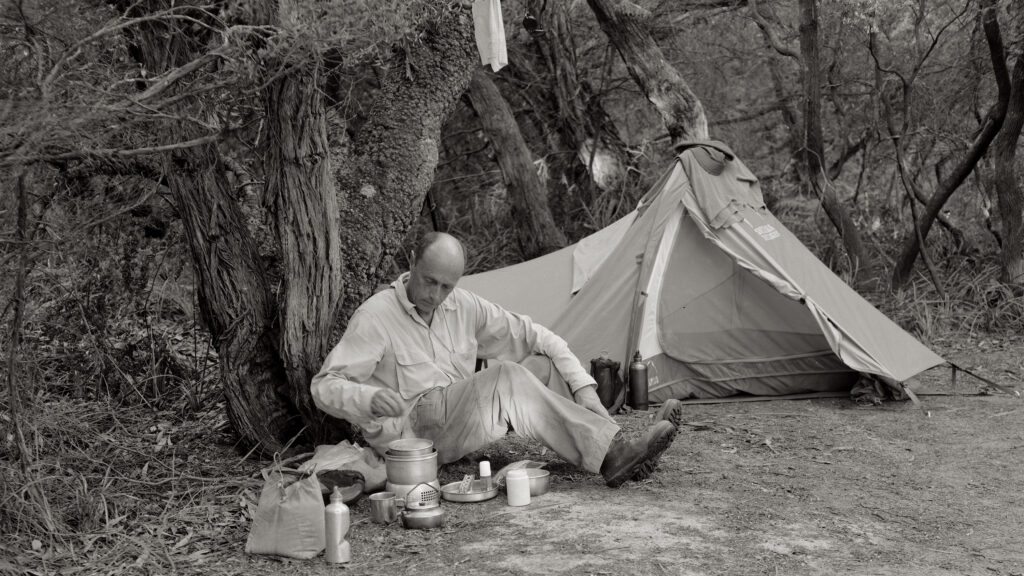
Previous Post: Photographer Greg Wayn’s new website

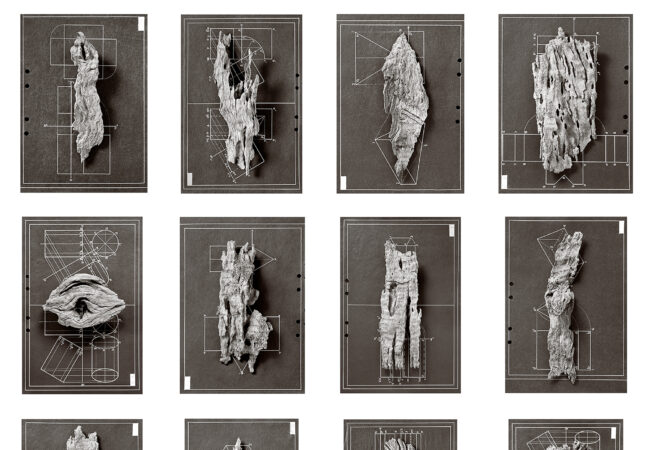

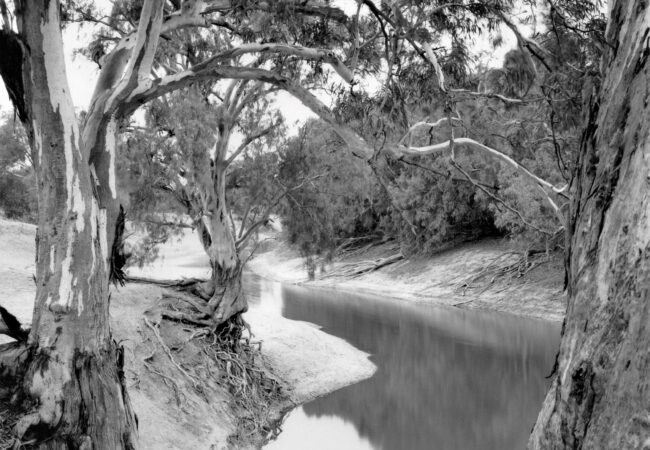
Nice set and very cool area David, thoroughly enjoyed.
Thank you Danny.
I am glad that you have shown a folio of your Cape Conran project. It looks to be a wonderful place. I did not know about it until I saw your photos. You are very fortunate to have been able to spend so much time there. It enabled you to get to know the details of the place and its various states.
My favourite image of the series has to be the featured one, entitled West Cape. I have always admired the majesty of that rock formation and that wonderful soft light. Was it early morning light? It is very sad to hear that the old growth Banksias and tea tree groves are now gone due to bush fires.
Thanks for the link to Ian Lobb’s landscapes. I have to admit that I didn’t know his bushland photos. They are very subtle.
Gary thank you very much. I recall the photograph was made in the afternoon, in early winter.
Each photograph wonderful David. I look forward to seeing these firsthand at some point! It doesn’t get any better than this.
Thanks very much Mat.
Wonderful collection of images David, the rock formations are tremendous!
Thanks very much Bianca.
Thanks for sharing these stunning images of one of my favourite coastal parks David. You have captured some lovely moments of light and movement. I particularly like the peaceful mood and reed reflections of the ‘Dock Inlet’ image. Congratulations.
Thank you Keith. Dock Inlet is very special.
Thank you for sharing this Folio,David, it is a beautiful body of work. It illustrates well the sense of place that comes from revisiting an area and photographing it through time and season.
Thank you Mark.
David these fine images are masterclass in photographic vision, composition and technical excellence!
Thank you very much Brian.